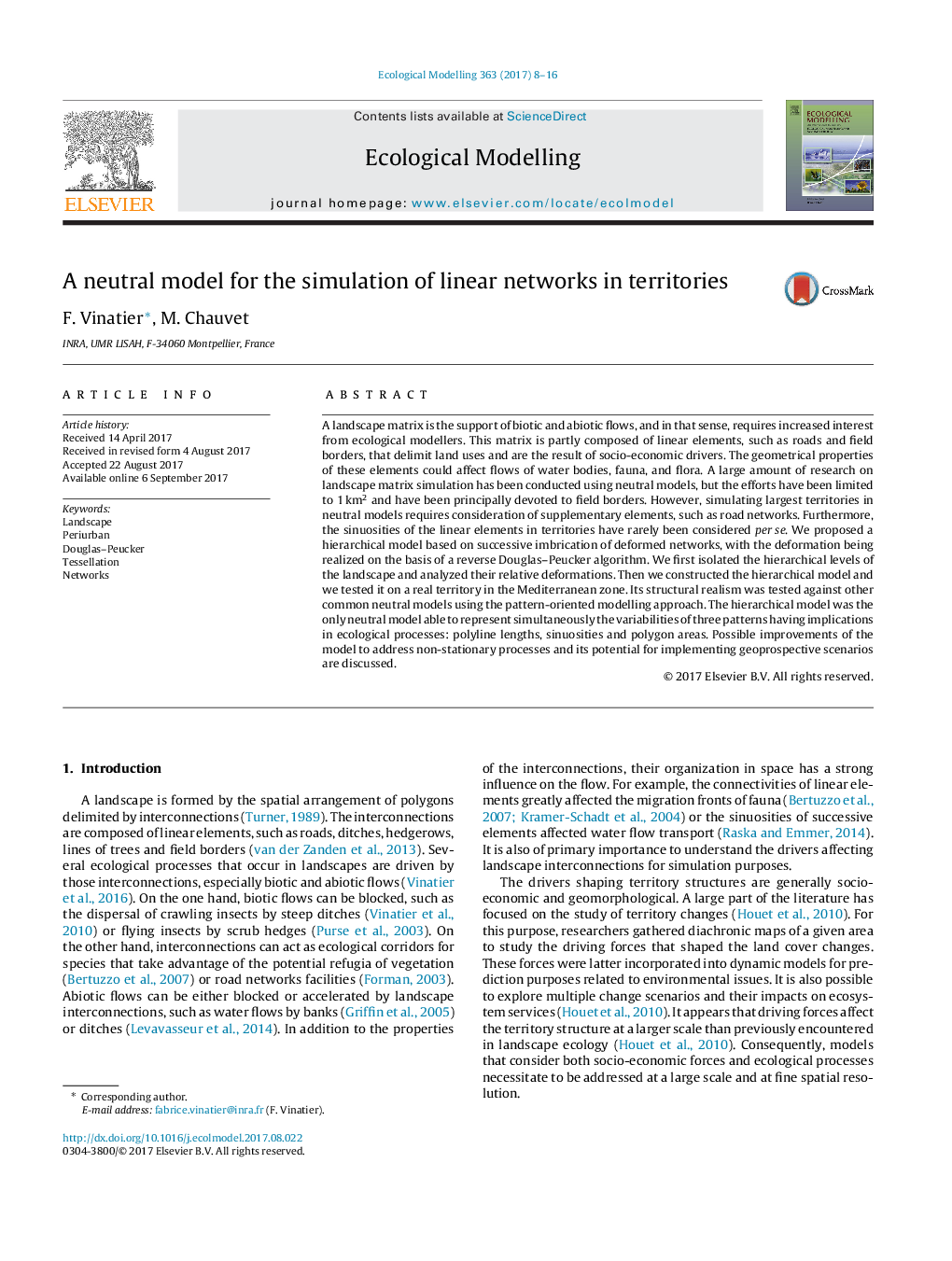| کد مقاله | کد نشریه | سال انتشار | مقاله انگلیسی | نسخه تمام متن |
|---|---|---|---|---|
| 5742009 | 1617384 | 2017 | 9 صفحه PDF | دانلود رایگان |
- A hierarchical model to simulate territories was considered.
- Digitized territories were considered as spatially ranked and deformed networks.
- New networks were reconstructed reversing the Douglas-Peucker algorithm.
- Territories were better represented with the proposed model than neutral ones.
A landscape matrix is the support of biotic and abiotic flows, and in that sense, requires increased interest from ecological modellers. This matrix is partly composed of linear elements, such as roads and field borders, that delimit land uses and are the result of socio-economic drivers. The geometrical properties of these elements could affect flows of water bodies, fauna, and flora. A large amount of research on landscape matrix simulation has been conducted using neutral models, but the efforts have been limited to 1Â km2 and have been principally devoted to field borders. However, simulating largest territories in neutral models requires consideration of supplementary elements, such as road networks. Furthermore, the sinuosities of the linear elements in territories have rarely been considered per se. We proposed a hierarchical model based on successive imbrication of deformed networks, with the deformation being realized on the basis of a reverse Douglas-Peucker algorithm. We first isolated the hierarchical levels of the landscape and analyzed their relative deformations. Then we constructed the hierarchical model and we tested it on a real territory in the Mediterranean zone. Its structural realism was tested against other common neutral models using the pattern-oriented modelling approach. The hierarchical model was the only neutral model able to represent simultaneously the variabilities of three patterns having implications in ecological processes: polyline lengths, sinuosities and polygon areas. Possible improvements of the model to address non-stationary processes and its potential for implementing geoprospective scenarios are discussed.
Journal: Ecological Modelling - Volume 363, 10 November 2017, Pages 8-16
